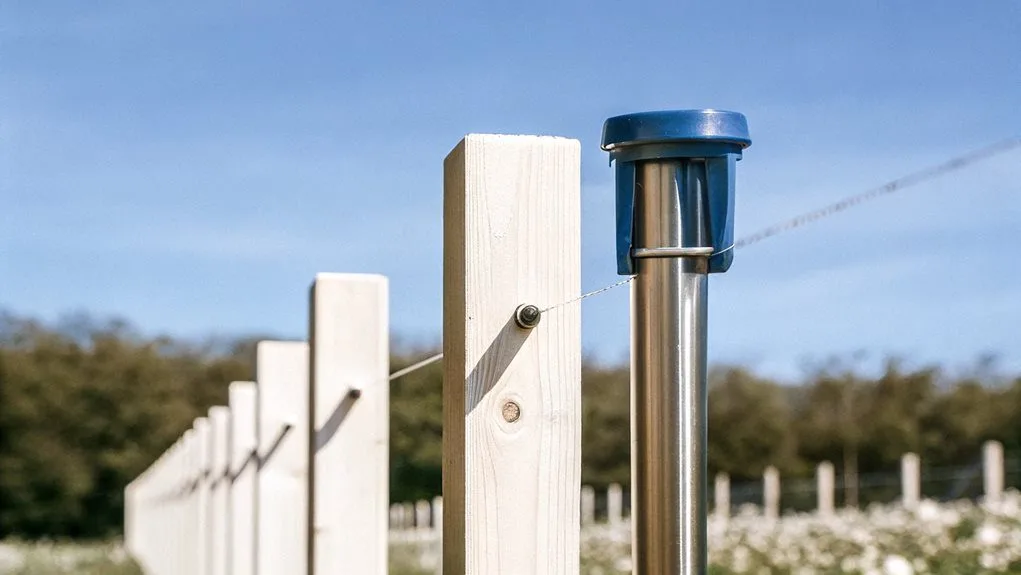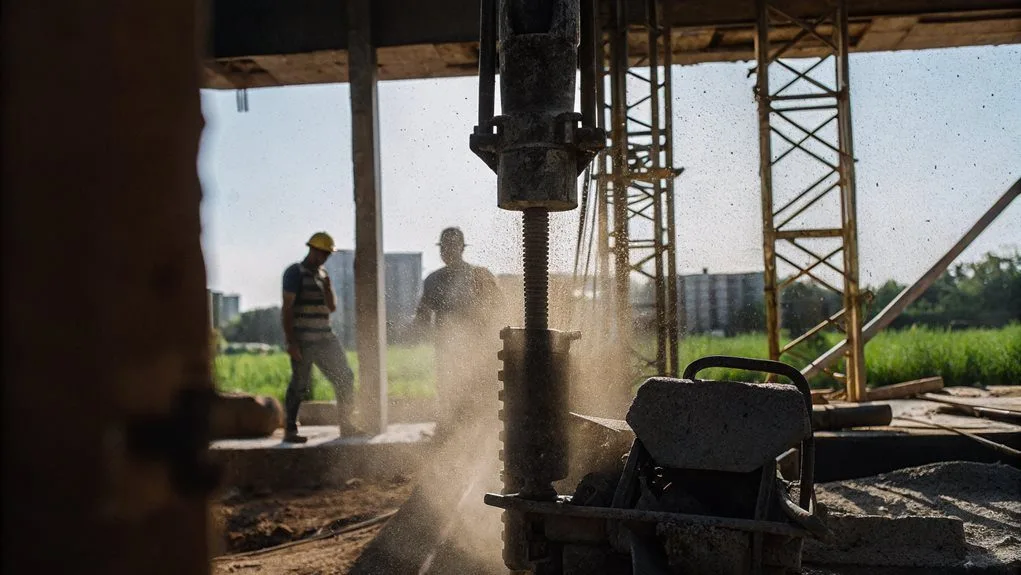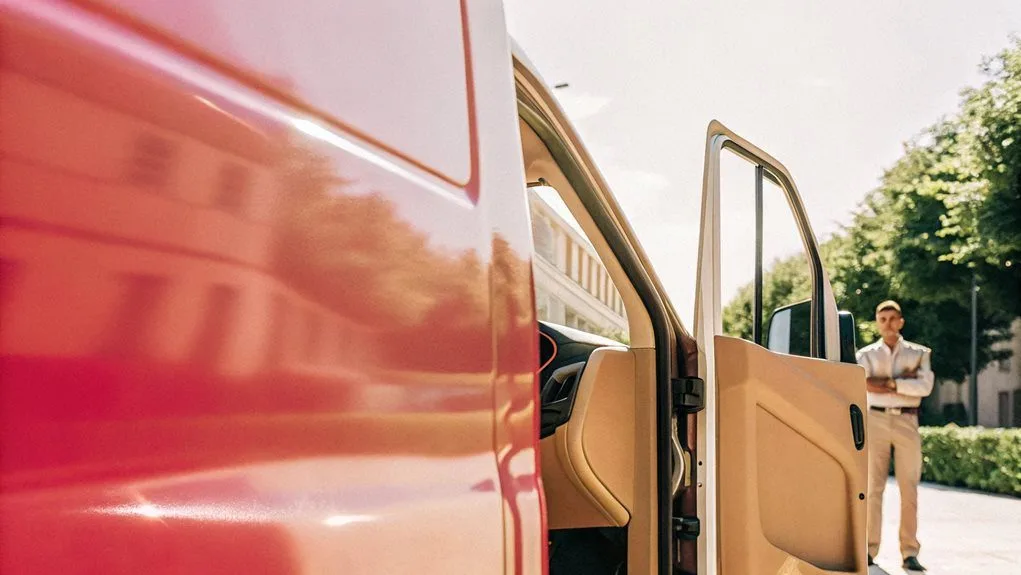When facing water emergencies, tankers represent an excellent solution for rapid delivery where municipal systems have failed. These vehicles can transport up to 37,854 litres of water, making them invaluable during crisis situations. Their mobility allows access to remote locations that standard infrastructure cannot reach, ensuring communities receive essential water supplies regardless of geographical challenges.
Whilst tankers do present certain operational considerations including maintenance costs and specialised driving requirements, their effectiveness in emergency scenarios makes them indispensable assets. Beyond emergency water delivery, these versatile vehicles serve multiple purposes, demonstrating their value as practical solutions for various water transportation needs when conventional supply systems prove inadequate.
Key Takeaways
- Water tankers can deliver up to 37,854 litres for emergency hydration during crises like natural disasters and supply shortages.
- They reach inaccessible areas where regular water supplies cannot, ensuring reliable access to clean water in emergencies.
- Various tanker types, including potable water trucks and mobile dispensing units, cater to different hydration needs during critical situations.
- Ongoing risk management and safety measures are essential to address operational risks associated with tanker delivery.
- Regulatory compliance ensures that delivered water meets strict drinking quality standards, preventing contamination in emergency scenarios.
The Role of Water Tankers in Emergency Situations
Emergency Water Delivery: Are Tankers an Option?
The Role of Water Tankers in Emergency Situations
Regarding emergencies, water tankers are like that trusty friend who always shows up, no matter how chaotic the situation gets. When disasters strike—think earthquakes or veld fires—you can count on these behemoths to haul essential water. What’s the deal with their size, right? They can carry a whopping 37,854 litres! That’s a lot of H2O. And guess what? They can reach places where regular water supplies can’t, which is brilliant. However, operating them isn’t all sunshine and rainbows; the risk of tanker crashes is significant due to factors like excessive speeds and driver distractions. Moreover, their durable construction materials ensure safe handling and transport of water to affected communities. But without these tankers, affected communities would be thirsty and struggling.
Types of Water Tankers for Different Needs
When you think about emergency water delivery, you might imagine a gigantic tanker swooping in like a superhero—but wait, there’s more!
You’ve got your potable water tanker trucks bringing life-saving hydration, perfect for those desperate moments. These trucks can deliver 2,000 to 4,000 gallons of water, ensuring that communities receive sufficient supplies during emergencies. They are also designed for essential water supply to ensure no one goes thirsty.
Then, there are bulk water delivery lorries; they’re not just for filling swimming pools, folks!
Need quick access? Meet refillable water tanks like The WaterMonster—they’re portable and ready for action.
Let’s not forget mobile water dispensing units, which make hydration a breeze at events or during crises.
Seriously, aren’t you glad they exist?
Emergency water storage tanks even offer a cosy spot for fresh drinking water.
It’s like a water buffet for communities in need—minus the long queues!
Market Trends and Growth in Water Tanker Services
Why on earth is the water tanker services market booming?
Well, you’ve got climate change throwing curveballs and municipal systems crumbling faster than your last DIY project.
It’s no surprise water tankers are in demand.
The market’s set to leap from ZAR 782 billion in 2025 to a whopping ZAR 987 billion by 2035.
That’s a 2.4% annual growth rate.
You see, agriculture and mining can’t just wait around for the municipality to fix its plumbing.
With the global market valued at USD 12.5 billion in 2025, projected to reach USD 25.8 billion by 2035, it’s clear that water scarcity is driving this demand.
Moreover, the global water tanker market is witnessing significant growth in the near future, highlighting the increasing need for reliable water transport solutions.
And with tech advancements making tankers tougher than your average high school rugby player, it’s a win-win.
Plus, who knew water could be such a hot commodity?
The global need’s rising—after all, staying hydrated is kind of essential, right?
Challenges Faced by Water Delivery Operations
Water delivery operations face a whole circus of challenges, don’t they?
You might think getting water to folks in need is straightforward, but wait until you meet maintenance costs that’ll make your wallet scream. Moreover, WaaS® provides solutions that aim to ease the operational burdens on water utilities through innovative management strategies. Additionally, the market is projected to reach $25 billion by 2033, which highlights the growing demand that must be addressed despite these challenges.
Plus, traversing rough terrain and endless regulations can feel like you’re trying to dance the cha-cha in a minefield.
Maintenance and Upkeep Costs
Ever wonder why maintaining a water delivery lorry sounds like a part-time job? It’s not just filling it up and going! You’re looking at annual costs that can range from R95,000 to R285,000—crikey!
Routine maintenance, like oil changes, eats up a good chunk, often R28,500 to R114,000.
And don’t get me started on major repairs! Think R23,750 to R99,750 for engine issues.
Tyres? About R9,500, please!
Throw in fuel—which at 30 litres per hour really adds up—and driver wages of around R456 per hour… well, you see where this is headed.
Surprise repairs? They can sneak up on you too!
Who knew water delivery could empty your pockets faster than the water it carries?
Terrain and Accessibility Issues
How do you even tackle the challenges of supplying water in tough terrains? Seriously, let’s be real.
You’re looking at mountains, hills, and roads that resemble more of a puzzle than a path. Good luck if rain turns it into a slip-and-slide!
Remote areas? Oh, you’ve signed up for a fun scavenger hunt. Poor infrastructure means you might as well be supplying water to Mars.
And let’s not forget about those equipment transport nightmares. You need specialised vehicles just to traverse ground conditions that feel like a dance-off gone wrong.
Honestly, it’s like trying to deliver groceries in the middle of a mud-wrestling match. But hey, with a solid game plan, you might just win the water delivery Olympics!
Regulatory Compliance Challenges
When you finally think you’ve conquered those tricky terrains, guess what? You’ve still got regulatory compliance to tackle. It’s like running a marathon only to find there’s a surprise obstacle course.
Community water systems struggle, with almost half failing drinking water standards last year. It’s not just about supplying; it’s about dodging violations and keeping the Department of Water and Sanitation off your back.
Real-time monitoring sounds fancy, but who’s got the time? You’ve got to train your staff, keep up with the Water Services Act, and pray your emergency operations plan actually works.
Talk about a juggling act! So, how do you feel about being a part-time firefighter, part-time water courier, all whilst manoeuvring red tape? Fun, right?
Applications of Water Tankers Beyond Emergencies
Water tankers aren’t just for those nail-biting emergency situations when a drought strikes or a main breaks.
You’ve got a pool party coming up, and guess who’s on deck? That’s right—water lorries can fill your backyard oasis faster than your neighbour’s jealous remarks.
Landscaping a bit? They’re the unsung heroes behind those lush gardens and sparkling ponds.
And let’s not forget about those agricultural shows and festivals where hydration keeps the fun alive.
Need to water your crops? Yep, tankers deliver that too.
Oh, and livestock? They need their daily drink, and water lorries are never late to the party.
Ensuring Safe and Reliable Water Supply in Critical Situations
In times of crisis, you don’t want to be left high and dry, right? That’s where water tankers come in, swooping in like heroes, ready to save the day.
With capacities from 5,700 to 11,400 litres, they’re not playing around.
Sure, there are risks—think of those crash reports—but safety measures are getting better.
And let’s be honest, no one wants dirty water; these tankers must meet strict drinking water regulations.
When disasters strike, or remote areas need help, these bad boys deliver.
So, whether it’s a festival or a natural disaster, count on tankers to hold the fort with reliable supply.
Sweet, sweet water; it’s essential, wouldn’t you agree?
Conclusion
So, there you have it. Water tankers: the big, shiny heroes of emergency situations. They haul precious H2O when your taps run dry. It’s like waiting for a pizza delivery, but instead of pepperoni, you’re praying for hydration. Sure, they’ve got their challenges—traffic jams and logistics aren’t just movie plot points. But when you’re parched, do you really care? You just want that sweet, cool water. Here’s hoping you never need a tanker, but if you do, at least they’re out there!






